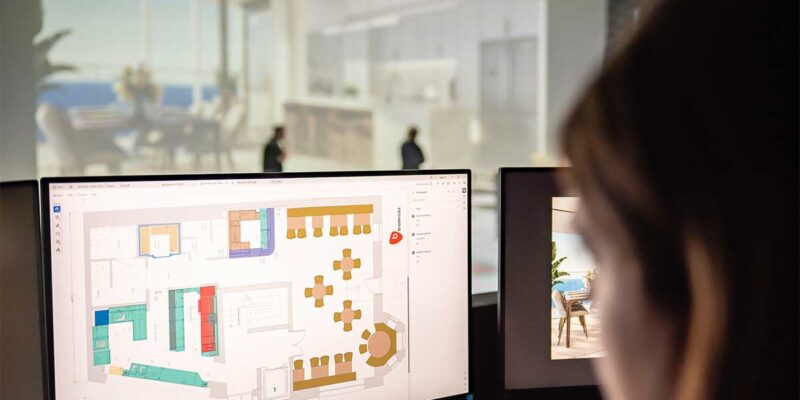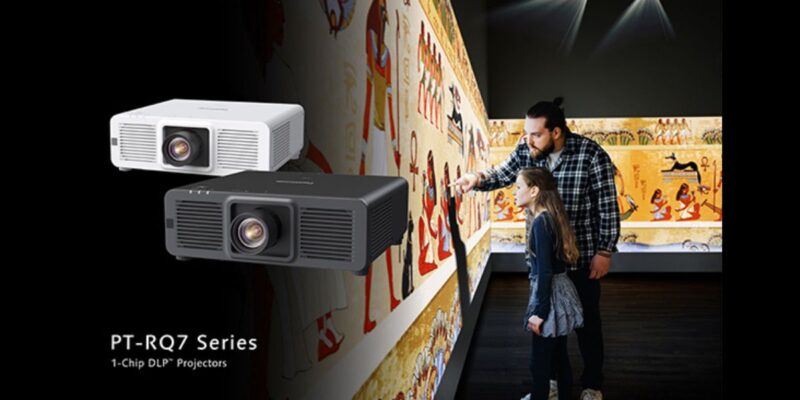How EdTech Is Changing — Perspectives from Panasonic
Earlier this year, I learned that one of my favorite Netflix documentaries of 2020, “Cheer,” was shot in 4K on four Panasonic VariCam LT and EVA1 cinema cameras. So around the time when I got a lead regarding another story from Panasonic Visual Systems — a story about all the work the company has been doing in the education space this year — the manufacturer was already on my mind. Also, in mid-June, rAVe had just covered another Panasonic announcement on some new UCC-based solutions and technology configurations for flexible remote work and learning.
Panasonic, who you most certainly know for cameras, and probably for projectors and displays too, has been making moves in the higher education space this year. To learn more, I spoke with Panasonic’s Hamid James, product manager for remote production, and Hank Reed, senior territory account manager.
 Image: Panasonic
Image: Panasonic
To state the obvious, education is a burning-hot topic right now (though sometimes it feels like it’s this kind of burning), and not just in AV; you could definitely stretch this relevancy to mainstream life and news. If you don’t have children or haven’t had to personally make the decision whether to send the kiddos back to school for in-person learning, you probably know someone who has. It’s been a tremendous effort for AV and IT to keep it all on track. Especially for higher-ed tech managers, it’s all hands on deck to ensure whatever version of learning plays out in your school district this year: in-person, all-remote, HyFlex (hybrid flexible) or even just one week of in-person classes then a shift to all-remote. Oh, and everyone will expect AV and IT to pull it off without a hitch, right?
From my conversation with Reed and James, I learned that Panasonic recently introduced “Virtual Experience” configurations to provide the AV tools needed for this shift to hybrid learning. Specifically, that means more effectively streaming lectures, lessons and other activities that previously occurred only in the classroom.
On sheer legacy in the AV space alone, Panasonic was poised to encourage collaboration through its distance-learning solutions, which I have since learned helped simplify the process of remote learning for educators and students this year — with a couple concrete examples you’ll find below as proof. These “Virtual Experience” technology configurations are defined as “interactive and collaborative solutions for remote learning on campus and in the home.” And according to Panasonic, the configurations are intended to address the need for flexible learning environments like HyFlex, for both student and teacher.
So what are Panasonic’s “Virtual Experience” solutions? They include the manufacturer’s professional-grade displays, a pan-tilt-zoom (PTZ) camera, wireless microphones and mounting accessories, which all work together to elevate the remote learning experience and keep students engaged. I learned that these Panasonic tools are already being leveraged in today’s remote environments, with these offerings:
- Options in entry-, standard- and advanced-level configurations to meet various budget requirements and applications
- Any combination of configured offerings to use with your preferred online software platform, all living under one standard, whether on campus or across multiple remote locations
To achieve what Panasonic called “good, better, best” solutions for its customers in the hybrid-flexible environment, the company leaned on its relationships with partners and faculty and even end users to really understand the task at hand, Reed said. The result was the development of entry-level, standard and advanced configurations that could work with remote learning in a variety of spaces. The entry-level package, for instance, includes a wide-angle lens solution with a display in the backdrop — offering a way for professors to better present their material, getting up to walk around with enhanced audio and a clearer picture.
Reed continued that, at first, the challenge was professors’ uneasiness even coming to campus, no matter whether students were allowed. Also challenging was that professors wanted to play to the remote audience — in essence performing to them — while also tackling students’ Zoom fatigue. Engagement via remote learning is hard to accomplish on a 2D platform only designed for so many participants. Reed added that Panasonic wanted to be a market leader in changing the way we learn and the way we work. But when COVID-19 happened, it was so fast; and Panasonic, like everyone, had little time to digest it all. How do you transition to remote learning while emulating a real-world classroom to get the same high collaboration and engagement experience between professor and student?

James, specializing in Panasonic’s PTZ solutions, explained how the PTZ camera lends itself to what’s happening in this space, because remote production and technology need to be flexible. With schools taking on hybrid learning — occurring both on campus and at home simultaneously — a solution would need to be simple to set up and get running. An added benefit to Panasonic PTZ cameras is connectivity with Panasonic displays, adding seamless connection between products. The thought process here, James explained, was that even if the pandemic goes away, we’re all going to need a solution as a backup for in-office or in-school learning. Solutions like PTZ cameras are definitely here to stay, he argued.
In the classroom and remotely, Panasonic’s products are allowing for immersive collaboration, according to the manufacturer — from a ProAV standpoint, PTZ cameras used in a classroom and in remote settings offer a more engaging meetup experience than a 2D platform would. This helps seamlessly transition from remote to in-classroom learning in a synch (think “plug and play”).
It’s always helpful to have examples, so here are three case studies I learned of:
- Siena College livestreamed its 2020 commencement with a Panasonic AG-CX350 camcorder.
- A chemistry teacher at Westfield Washington Schools leveraged a Panasonic PTZ camera to stream lessons and experiments with his students.
- Pepperdine University upgraded more than 160 classrooms with a hybrid classroom solution featuring Panasonic PTZ cameras for remote distance learning.
Panasonic’s efforts in taking remote-learning solutions steps further than your average work-from-home bundle is certainly worth a good look. Offering one platform, with one standard (also allowing you to work in whatever architecture you need — Zoom, MS Teams, Cisco), Panasonic’s approach to collaboration looks to be helping fill today’s HyFlex needs. I learned from this casual but important Friday conversation that, despite success so far, the manufacturer continues working hard to further achieve even better solutions that benefit both at-home and in-school learners.
After all, we all want enhanced virtual connections and learning experiences. Listening to customers — oftentimes requiring tough conversations — and building products that fulfill their needs are ways to get us there.





